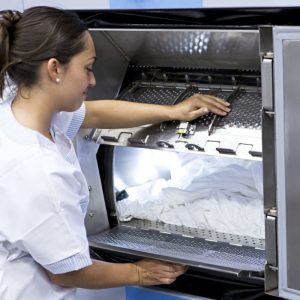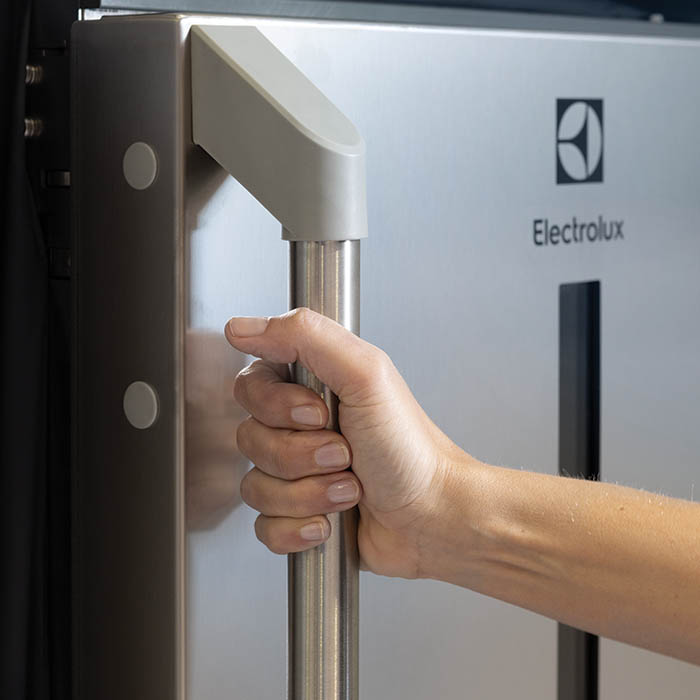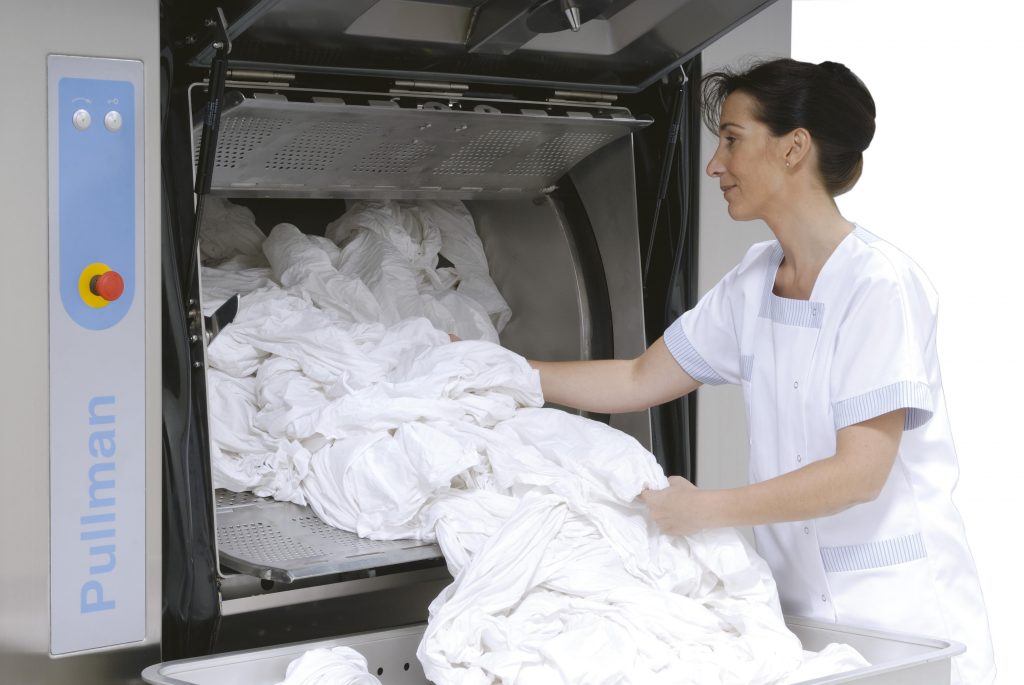Many businesses include a professional laundry service as a side operation (community businesses come to mind), and some of them need Barrier Washers. When contamination, cross-contamination or re-contamination require both regulatory compliance and common sense, those businesses need to use a particular kind of industrial washer and dryer called a Barrier Washer.

As the name suggests, Barrier Washers are enclosed by paneling or a wall so that they are the only link between two completely separate rooms; this way, clean laundry never comes into contact with soiled laundry because garments are loaded into the washer on the “unclean” side and are unloaded on the other side: a clean, separate room.
What features are important in Barrier Washers?

This largely depends on the kind of business involved. Barrier Washers are mainly used in:
- Hospitals
- Care facilities (nursing homes, elderly care homes, facilities for dependent or long-term patients)
- Correctional institutions
- Chemical/Pharmaceutical plants
- Cosmetics laboratories
- Manufacturing/repair facilities for electronic devices
- Nuclear plants
- Mining industry
- Special operations (firefighting, emergency services)
In some of them, the main hazard that a Barrier Washer can prevent is cross-contamination. They act as a means of infection and disease control in hospitals, care facilities, correctional institutions and more. In these cases, the risk stems from the simultaneous aspects of a large number of people sharing the same spaces and the high probability that some of those people are disease carriers. Under these circumstances, the minimum requirement is that it must not be possible to open the Barrier Washer doors for loading and unloading at the same time.
In certain other applications, like the electronics industry, where the washing process is very aggressive, the Barrier Washer must also feature specific materials that are resistant to the process employed.
Barrier Washers: how many garments can be processed at any one time?
One of the best ways of preventing contamination is to wash and sanitise contaminated linen as quickly as possible. The faster the throughput, the better the result. This issue is connected to the size of the barrier washer but also depends on
- The technology used for the washing process: cycle management is fundamental for delivering fast operations without compromising the cleaning result.
- The ergonomics of the barrier washer: user-friendly industrial washers are quicker to program, load and unload, so they can perform more cycles, more rapidly.
- Maintenance requirements: more laundry can be washed in a low-maintenance barrier washer that operates for longer periods of time and with a rapid maintenance turnaround.

Barrier Washer: hygiene guarantees?
When processes for controlling infection and preventing cross-contamination are at stake, the most important feature is to ensure excellent cleaning performance. Sensors and routine checking systems are key expedients because they assure control of the decontamination process. Automation is also important: overrides to prevent wash cycles from being cut off ensure that the garments unloaded from the barrier washer have completed the sanitization treatment.
Ease of installation
To operate as it should, the Barrier Washer must be correctly positioned and the facility must be appropriately designed. A compact washer is preferable because it is easier to position the appliance and to isolate the two rooms satisfactorily.